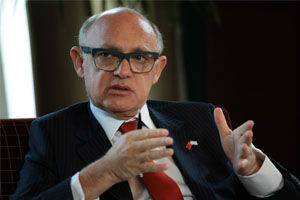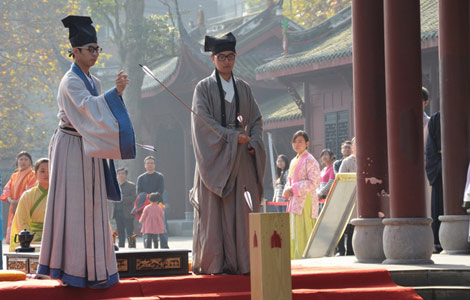The supercomputer race has no finish line in sight
Updated: 2013-11-21 08:53
By Chris Davis (China Daily USA)
|
||||||||
The results are in and China remains at the top of the list for having the world's fastest computers, or supercomputers to be more precise.
It's called Tianhe-2 (Chinese for "Milky Way"), developed by China's National University of Defense Technology (NUDT) using US-designed Intel microchips and run by Guangzhou's municipal government.
Tianhe-2 is twice as fast as the No 2 computer on the list, the US Department of Energy's (USDOE) Titan, which occupies a good deal of floor space at Oak Ridge National Laboratory outside of Knoxville, Tennessee.
The "speed" of these monsters is measured using a program called the LINPAK Benchmark, a downloadable dense matrix of linear algebraic equations and problems to solve on the clock. Tianhe-2 runs at 33.86 petaflop/s, which is the equivalent of 33,863 trillion right answers per second. Titan can do 17.59 petaflop/s, but, its keepers are quick to point out, it is one of the most energy-efficient systems on the top 500 list of the world's fastest supercomputers. Electric bills for supercomputers run in the millions, and a lot of the power goes to keeping them cool.
Close behind Titan in the No 3 spot is the US DOE's Sequoia, an IBM BlueGene/Q system at the Lawrence Livermore National Laboratory in California, which hit 17.17 petaflop/s. And Japan's Fujitsu's K computer in Kobe comes in fourth at 10.51 petaflop/s.
The top 500 rankings (www.top500.org) are compiled twice a year by three scientists — one in Germany and two in the US. The rankings list started as an innocent exercise in curiosity in preparation for a small conference in Germany in June 1993. For the fun of it, the three decided to revisit the list half a year later in November to see how things had changed.
And had they ever. The results — the rate of change, the speed that the technology was advancing and evolving, the global breakneck race for the fastest machine that was underway — were so dramatic and compelling that they have continued updating the list ever since and the twice annual unveiling has become one of the most anticipated events in the world of geeks — Big Bang Theory meets the Academy Awards.
It's probably safe to assume that side bets abound, but handicapping the race for the fastest supercomputers — or high-performance computers (HPC) — produces such gee-wiz factoids as these:
The total combined performance speed of all 500 systems on the list is 250 Pflop/s, half of which is achieved by the top 17 computers, the other half being spread among the remaining 483 systems.
Intel continues to provide the processors for the largest share — 82.4 percent — of the TOP500.
Ninety-four percent of the systems use processors with six or more cores and 75 percent have processors with eight or more cores.
The number of top 500 high-performance systems installed in China has leveled off at 63 for now, compared with 65 on last summer's list. China occupies the No 2 position as a user of HPC, behind the US but ahead of Japan, the UK, France and Germany. Due to Tianhe-2, China this year also took the No 2 position in performance share, knocking Japan out of the spot.
The last system — the 500th ranked — on the new list was ranked 363rd on the list six months ago, which gives a sense of the intensity of the race.
Geographically speaking, the list makers write: "The US is clearly the leading consumer of HPC systems, with 265 of the 500 systems (253 last time). The European share (102 systems compared to 112 last time) is still lower than the Asian share (115 systems, down from 118 last time).
Dominant countries in Asia are China with 63 systems (down from 65) and Japan with 28 systems (down from 30). Europe breaks down with UK (23), France (22), and Germany (20)."
The big question is why does anyone need such computing power? China's NUDT says that it developed Tianhe-2 for "government security applications, various simulations, and analysis," RT News reports. It is a "research and education" tool that can be put to work in commercial industries and research fields that need to process mind-spinning amounts of raw data, such as astrophysics.
The monster $390 million Tianhe-2 can also multi-task, Xinhua reports, and will be able to operate traffic lights, predict earthquakes, test new pharmaceuticals and auto designs and create special effects for movies — all at the same time.
The perfect gift just in time for the holiday season.
Contact the writer at chrisdavis@chinadailyusa.com

 Obama, Clintons honor Kennedy's assassination
Obama, Clintons honor Kennedy's assassination
 China urges nations on climate funding
China urges nations on climate funding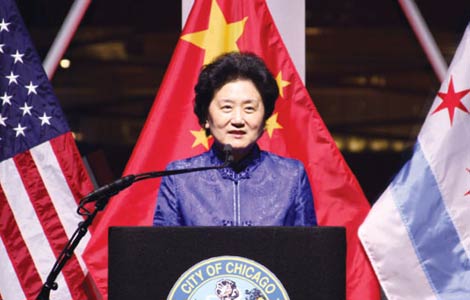
 Vice-Premier praises win-win ties
Vice-Premier praises win-win ties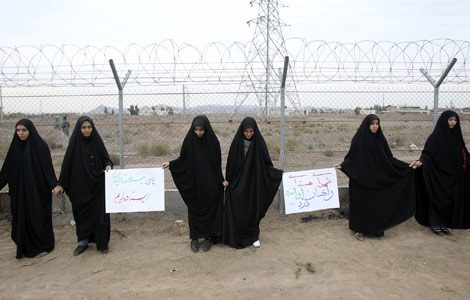
 Hopes rise for accord in nuclear negotiation
Hopes rise for accord in nuclear negotiation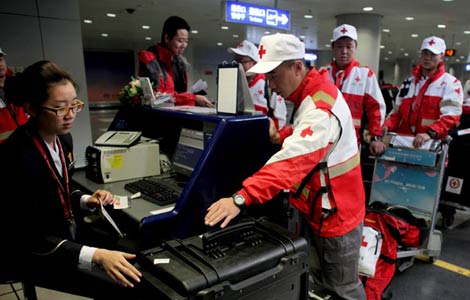
 Rescue team lands in Manila
Rescue team lands in Manila
 SCO meeting to focus on battling terrorism
SCO meeting to focus on battling terrorism
 Obama opens JFK tribute with freedom medals
Obama opens JFK tribute with freedom medals
 Syria's chemical weapons may be destroyed at sea
Syria's chemical weapons may be destroyed at sea
Most Viewed
Editor's Picks

|

|

|

|

|

|
Today's Top News
Chinese professionals 'lured by local enterprises'
Search firms to meet senior-manager shortage
Washington wines gain ground
Obama, Clintons honor Kennedy's assassination
China urges nations on climate funding
China appreciates Gary Locke's tenure
Chinese president seeks greater China-EU co-op
Rescue team lands in Manila
US Weekly

|

|
